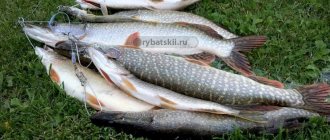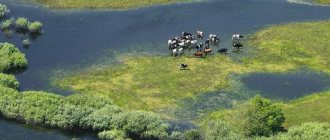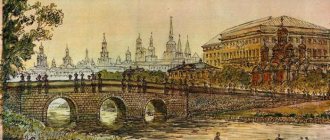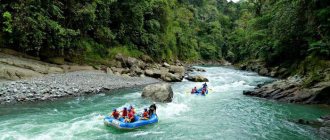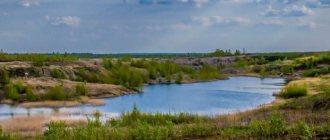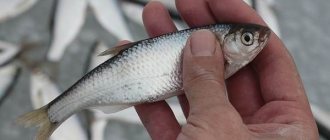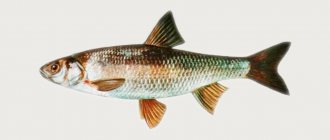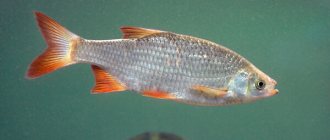The Nerskaya River flows through the territory of the Moscow region. In terms of length, it can be classified as a medium-sized water stream. It is a left tributary of the Moscow River, flowing into it 43 km from the mouth. The source of the Nerskaya River is considered to be a peat bog at an elevation of 124 m above sea level, in the Orekhovo-Zuevsky district. Its length is 92 km. The Nerskaya River in the Moscow region belongs to the internal basin of the Oka. The area of the drainage basin is 1.5 thousand square meters. km.
Characteristic
In the upper reaches the river is swampy, passes through forest plantations, and is often interrupted. For this reason, in several places the riverbed is straightened by specially constructed canals. At the upper reaches it is typically forested with narrow valleys and shallow depths. The average width of the channel is 2-3 m, the maximum depth is about 1 m. Only in places where the river is channeled does the depth increase to 2 meters. For the first 10 km, the Nerskaya River flows in a southerly direction, and after that it turns to the west. Further downstream it picks up speed and spills in the lower part. The maximum width of the valley is 20 m. This place is located near the confluence with the Moscow River. The slope of Nerskaya is small - only 0.185 m/km. Because of this, the river flow is quite calm, quiet - no more than 0.5 m/s.
The riverbed is slightly winding. The banks of the river are clayey and swampy, and landslides often occur. There are practically no beaches. Along the entire length of the river, forests approach the banks. Sometimes there are open meadow areas. Not far from the mouth, the Nerskaya River enters the floodplain of the Moscow River. There is practically no vegetation in this place.
Voskresensk, weather forecast and fish bite
| Weather forecast and fish bite | Fishing calendar, from 01-07-2021 to 04-07-2021 | ||||||||||||
| Thu | PT | SB | VS | ||||||||||
| Times of Day | Day | Evening | Night | Morning | Day | Evening | Night | Morning | Day | Evening | Night | Morning | |
| Cloudiness, precipitation | Small rain | Small rain | Small rain | Partly cloudy | Mainly cloudy | Mainly cloudy | Mainly cloudy | Mainly cloudy | Mainly cloudy | Mainly cloudy | Mainly cloudy | Mainly cloudy | |
| Temperature °C | 19 | 21 | 19 | 15 | 17 | 20 | 19 | 17 | 18 | 23 | 20 | 16 | |
| Pressure, mm. | 755 | 756 | 758 | 759 | 758 | 758 | 758 | 758 | 758 | 758 | 759 | 760 | |
| Direction, | North wind | North wind | North wind | North wind | North wind | North wind | Wind northeast | East wind | East wind | East wind | Wind northeast | Wind northeast | |
| wind speed | 4 m/s | 3 m/s | 4 m/s | 3 m/s | 3 m/s | 3 m/s | 1 m/s | 1 m/s | 3 m/s | 2 m/s | 3 m/s | 3 m/s | |
| According to the forecast, they will bite on: maggot, mastyrka, worm, corn crucian carp | 55% | 65% | 65% | 85% | 55% | 65% | 65% | 75% | 55% | 65% | 65% | 75% | |
| According to the forecast, they bite on: corn, potatoes, peas, boilies Carp | 65% | 75% | 75% | 75% | 65% | 75% | 75% | 85% | 65% | 75% | 75% | 85% | |
| According to the forecast, the fish will bite on: live bait, spinners, wobblers, and silicone baits Pike | 45% | 50% | 10% | 45% | 45% | 50% | 10% | 60% | 45% | 50% | 10% | 60% | |
| According to the forecast, they will bite on: worm, leech, small baitfish, spinners, wobblers, silicone Perch | 40% | 50% | 0% | 70% | 40% | 50% | 0% | 60% | 40% | 50% | 0% | 60% | |
| Bait: parsley, caddis fly, dough, pearl barley, wheat Roach | 55% | 70% | 0% | 70% | 55% | 70% | 0% | 80% | 55% | 70% | 0% | 80% | |
The bite forecast will help you better choose a fishing day in January, February, March, April, May, June, July, August, September. October, November, December in Voskresensk. You may also be interested in the bite forecast for all fish in the Moscow region, or fishing in the Moscow region. Well, there is fishing in the neighboring reservoirs in the Volokolamsk region.
Reservoirs and tributaries
On its way, the river meets several small reservoirs. The most significant are the Davydov Lakes. These are three reservoirs of artificial origin. In the last century, sand was mined in this place for the construction of the nearby city.
On its way, Nerskaya receives 5 large tributaries and several small rivers. Left tributaries - r. Guslitsa (36 km), Volnaya (27 km), Sushenka (22 km). Right - r. Ponor (22 km), Sechenka (16 km).
Nerskaya River: kayaking
During the spring flood, when the Nerskaya floods over 5 km, kayaking is very popular here. Rafting sites do not extend along the entire length of the river. The most successful section is considered to be from the town of Kurovsky to the mouth. The routes are designed for one, two and three days. During rafting in the forest you will need to spend several nights. Their number will depend on the length of the route. Since there are no rapids on the river, rafting is ideal for beginners - there are no difficult sections. The length of the routes varies from 25 to 40 km.
Nerskaya (river)
This term has other meanings, see Nerskaya (meanings).
It should not be confused with a consonant, formerly identical, hydronym.
| Nerskaya | |
| The Nerskaya River near the town of Kurovskoye | |
| Characteristic | |
| Length | 92 km |
| Pool | 1510 km² |
| Water consumption | 8.3 m³/s |
| Watercourse | |
| Source (T) (B) | |
| • Location | Orekhovo-Zuevsky district |
| • Coordinates | 55°42′09″ n. w. 39°15′17″ E. d. |
| Mouth (T) (B) | Moscow |
| • Location | 6 km above Voskresensk |
| • Coordinates | 55°21′21″ n. w. 38°36′06″ E. d. |
| River slope | 0.198 m/km |
| Location | |
| Water system | Moscow → Oka → Volga → Caspian Sea |
| A country |
|
| Region | Moscow region |
| Districts | Orekhovo-Zuevsky district, Voskresensky district |
| in GVR | 09010101812110000024270[1] |
| source mouth | |
| Media files on Wikimedia Commons | |
Nerskaya
- a river in the eastern part of the Moscow region of Russia, a left tributary of the Moscow River, into which it flows 43 km from the mouth near the village of Marishkino, Voskresensky district.
The source of the river is located northwest of the village of Savinskaya, Orekhovo-Zuevsky district. In the upper reaches it flows through marshy areas, partially straightened by a canal. In the lower reaches it flows along the damp left-bank Moskvorets floodplain; south of the Kazan Railway it is also straightened by a canal[2]. Crosses the Kazan railway between the Kurovskaya station and the Podosinki platform, the Ryazan direction of the Moscow Railway between the Vinogradovo and Konobeevo stations, the A108 highway in Kurovsky and P105 in the Sobolevo area.
Moscow River Basin
The etymology of the name perhaps goes back to the ancient lake-river term ner-, from the same root the river Nerl is called[3][ not in the source
].
In the spiritual letters of Ivan Kalita it is mentioned as the Merskaya
[4].
The town of Kurovskoye and the workers’ settlement named after Tsyurupa are located on the river.
The length of the river is 92 km, the drainage basin area is 1510 km²[5]. Average slope 0.198 m/km. Average annual water flow - 8.30 m³/s [ source not specified 3699 days
].
The channel is slightly winding, the predominant depths are 0.6-3.6 m, the water rise in the spring flood is up to 10-13 meters, the width of the flood is up to 5 kilometers [ source not specified 3699 days
].
It flows through several lakes and artificial reservoirs. The main ones are located near the village of Terenkovo, in the town of Kurovskoye (57 km from the mouth), between Kurovskoye and Antsiferovo. The catchment and floodplain (in the middle and lower reaches) are rich in small lakes. Including Davydov lakes.
It is of interest for short-term kayak trips (on weekends). Beautiful nature, mushroom places, convenient places for tent camps, convenient access by personal vehicle at any time of the year (sandy soils).
According to the State Water Register of Russia, it belongs to the Oka Basin District. The river basin is the Oka, the river sub-basin is the basins of the tributaries of the Oka to the confluence of the Moksha, the water management area is Moscow from the water metering station in the village of Zaozerye to the city of Kolomna[5].
object in the state water register - 09010101812110000024270[5].
Tributaries
(distance from mouth)
- 0.7 km: Sushenka River (lv)
- 26 km: Sechenka River (pr)
- 40 km: Guslitsa river (lv)
- 51 km: Surzhitsa River (pr)
- 61 km: Volnaya river (lv)
- 67 km: Ponor River (pr)
A little history
The river is mentioned in written sources as early as the 12th century. Its first name sounded like Merskaya (Merska River). During the reign of Prince I.D. Kalita (first half of the 14th century), the Ust-Merskaya volost was located on the river. Since the end of the 18th century, the name has been referred to as Nerskaya. In ancient times the river was navigable. A short route passed along it, connecting the major cities of the Moscow kingdom - Vladimir and Ryazan. This fact is also evidenced by the fact that there are many settlements along the banks of Nerskaya.
The hydronym itself is explained by the name of the tribes that once inhabited the Moscow region. These are the Finnish settlements of Mera or Nera (in other sources).
Ecological problems
Due to its close location to the capital, the ecology of the river is in critical condition. Along its entire length, especially at the mouth, the Nerskaya River is polluted by sewage. Due to the peat bottom, the water is brown in color. Now it does not meet sanitary standards. Of course, this is a problem with many rivers that flow within cities. Unfortunately, industrial enterprises constantly dump waste into water streams. And this, in turn, leads to severe environmental disasters.
Fishing and recreation
If we look at it in general, the Nerskaya River is not rich in fish. Fishing (read reviews from fans of this type of recreation below) is possible only in some areas. According to fishermen, you can catch pike, roach, perch and ide in the river. Their only favorite place is where its left tributary flows into the Nerskaya - the river. Guslitsa. Many people come here because this is the area where pike fishing is excellent. Fishermen are advised to use spinning rods or live bait. From the shore you can fish for perch and roach using a regular float rod. For bait, as a rule, they use bread, semolina or bloodworms.
On those sections of the coast where, instead of a forest, a meadow approaches the shore, you can often find tent camps. For example, not far from the village. them. Tsuryupa. Vacationers come here to enjoy the beauty of nature, trying to completely get away from the city noise. You can go to the nearest forest to pick berries and mushrooms.
In winter, Nerskaya freezes in its lower reaches. If the ice crust is thick, then this place becomes suitable for ski trips. Due to the fact that many waterfowl live on the river, people often come here to hunt.
Moscow River (village Marishkino)
This fishing area is a very interesting place from a fishing point of view. A little further upstream, the riverbed of the Moscow River bifurcates, and in the Marishkino area the two branches of the river converge again. Also in the area of the specified settlement, the Nerskaya and Otra rivers flow into the Moscow River. All these features create good conditions for fish, and they concentrate here, so these places can safely be called fishy places.
The Moscow River in this section is up to 100 meters wide. The depths here are different, and shallow areas give way to holes and whirlpools. Maximum depths reach 8 meters. The structure of the bottom is different - hard areas are mixed with muddy areas where there is aquatic vegetation. The flow is average, slow in places. There are enough approaches to the water, so you can safely go fishing from the shore.
In this section of the river you can catch pike, pike perch, bream, perch, asp, silver bream, ide, chub, roach and bleak. It is best to fish with a feeder or spinning rod. Fishing is available not only during the usual open water season, but also in winter. Moreover, in winter, the Moscow River practically does not freeze in this section of the Moscow River, which is why winter spinning enthusiasts like to come here.
In summer, in areas with depths of 4 meters or more, peaceful fish are well caught, which should be caught using maggots and canned corn. The local inhabitants react to the worm a little worse. Bait is a must because the areas are pressed in and the fish are careful. The weight of the feeders used in some places can reach up to 100 grams, although 60-80 grams is usually enough. You can also catch peaceful fish here using a float. They use both conventional fly fishing rods with blind rigging and advanced plug rods.
The spinning season here lasts almost all year round. And if in the warm season wobblers or spinners can compete with jig baits in terms of efficiency, then with colder weather, and especially in winter, jig comes to the fore. The main fish that spinning anglers target is pike perch. Pike fishing is also good, and with slightly smaller baits you can count on catching perch. The striped fish is also caught quite well on a retractable leash, which can also be used by an asp.
- Location: The section of the Moscow River is located just above Voskresensk in the area of the village of Marishkino
- Directions: From Moscow we drive along the Novoryazanskoe highway. In Novotroitsky we turn left onto the Big Moscow Ring and go to Voskresensk. Immediately after the bridge over the Moscow River we turn left onto Marishkino
- Nozzle, bait: foam rubber, vibrotail, maggot
- Types of fish: Chub, silver bream, ruff, asp, burbot, perch, gudgeon, roach, bream, catfish, pike perch, bleak, pike, ide
Reserved beginning
The Mezha River originates in the south of the Tver region in the Central Forest State Reserve. Fueled along the way by water from flowing rivers and streams, it continues its journey from north to south. After merging with Obsha, Mezha turns west and continues its path along the southern border of the Tver region. The abundance of logs submerged in the river allows the predator to feel comfortable. At the bends, Mezha forms rather deep pools, where the depth sometimes reaches 12 m. There are also shallow riffles on the river, where chub are in full swing. In the spring, when the snow melts and in the fall, when it rains, the water level in the river rises. Water rises to 10-15-meter coastal slopes and sometimes floods nearby villages. Spills go far into the forest, and along with the water, fish rush to the flooded areas. Village men sometimes catch fish with nets among the trees, far in the forest. Due to large spills and flooded roads, food is delivered to surrounding villages by motor boats. In deep autumn, the river freezes when the water is still high, and as the water level drops, the ice breaks, and individual ice floes can be seen hanging on the treetops.
When going to Mezha in any season, make inquiries about the water level in the river, otherwise you may come in vain. Firstly, due to the high water level, the fish scatter across the flooded floodplain.
Secondly, in a dry summer with hot sunny weather and low water levels in the river, the predator stands on the fairway and reacts poorly to spinning baits. But this is a problem for spinning anglers; generalists can do white fish or catfishing at this time. Thirdly, it would seem that if you go out on the ice in severe frosts, you can come to open water.
My first acquaintance with Mezha happened during a boat trip. The route was planned in advance. My sister and I were taken to the departure point of the confluence of two rivers: Arzhat and Chichatka. Further along the Chichatka River we rafted to Mezha. In general, the rafting to the final point - the village of Zharkovsky - took two days. We sailed along the Chichatka River in one day, crossing almost twenty kilometers of water, with stretches overgrown with horsetail, rocky rifts that scraped the bottom of the boat, and continuous rubble that could only be navigated by land.
The overnight stay took place in a wonderful place at the confluence of the Chichatka and Mezha, where catfish pecked at the bottoms at night, and large silver bream and roach pecked at the bottoms in the early morning. The further journey took one daylight, as a result of which we ended up in the village of Zharkovsky. Along the entire route, many large forest streams and one small river flowed into Mezha. The sources of the streams were excellent feeding grounds for various representatives of the aquatic kingdom. The water from the streams flowed dark in color, from which one could assume that the springs originated in the swamps.
After this fleeting study of the river, I fell ill with it for a long time.
Kingdom of the spotted predator
During Soviet times, timber was rafted along the Mezha, and therefore the river abounds in driftwood. At the bottom there is an almost continuous layer of flooded logs, bushes, and uprooted trees.
Some trunks stick out of the water, others are below the surface, posing a danger to rubber boats and motors.
The driftwood serves as a good shelter for an ambush predator, as well as for catfish and burbot, and protects the fish from nets.
Pike can be caught on Mezha almost all year round, not counting the spawning period and high water. During the first week after spawning, the predator indiscriminately grabs all moving baits. Local fishermen with low-power motors drag wobblers along the river. At this time, the water level is high enough and the baits move above the snags without snags. Pike prefers wobblers of natural color, such as perch, pike, roach. A variety of such colors can be found from Salmo. You just need to choose a wobbler with the required depth and attractive game. From conversations with one fisherman, I heard that they stop fishing when they manage to catch at least ten predators during fishing. Waking up catfish are biting on wobblers on the path.
In the spring, pike grab large, wide vibrating tails of white and light green colors. The bait must be moved at an average pace, but so that it moves in the water column without coming into contact with snags. For greater grip, the bait is equipped with an additional tee. The eye of the tee is put on a single hook of the jig head, and on top there is a rubber cambric that prevents the tee from flying out during fishing. One of the hooks of the tee is stuck into the back of the bait.
After active feeding, there comes a period when the pike feeds less intensively, but still bites on medium-sized vibrotails and twisters. During the period of open water, predators anywhere in the river prefer Rapala Shallow Shad Rap Runner wobblers. We select the working color of the bait experimentally. The second peak of predator activity is observed during the rapid decline of high water. The pike takes places near the shore irrigation and aggressively attacks the small things leaving with the water. In this case, it is better to lead the bait from the shore into the depths. With the fall of water and the onset of hot summer weather, Mezha along the banks in shallow areas is overgrown with grass. The entire predator, weighing up to three kilograms, is concentrated either next to vegetation or directly in the grass. The predator is more active in the grass than in clean water. It bites on twisters mounted on an offset hook, as well as on light, non-snacking oscillating spoons and Rapala Minnow Spoon wobblers up to 7 cm long. In certain windows of vegetation, pike prefers surface wobblers with a diving depth of up to 0.5 m. In 2005 Rebel baits, which resemble grasshoppers and frogs, worked well. In principle, any fish standing in a clear window near the shore is waiting for an insect to fall from the branches, and therefore most bites occur during the noisy landing of the bait or during the first turns of the reel. Sometimes, after splashing down the bait and there was zero reaction from the predator, I slightly moved the wobbler with the help of a rod, and the predator responded.
In summer, pike will not remain indifferent to the spinner fluttering like a butterfly in the water column. The spoon must be no smaller than No. 3 according to the Meps classification and have such qualities as easy rotation of the blade with a very slow retrieve. Therefore, first of all, it is necessary to use proven spinners, and only then start experimenting. Pike usually grab spinners along the shoreline along the edge of vegetation or flooded bushes. Closer to the riverbed, it is difficult to lift it from the bottom with a rotating spoon, and this is where other baits come into play. At any time of the year, pike can be found near the rivers, rivulets and streams flowing into the Mezha. Large pike on Mezha stand on dumps in the pools. It can be obtained using vibrating tails and deep wobblers with a blade that knocks the bait off the snags.
In deep autumn, with the first frosts, large pike come to the shores of the pools. Immediately before freeze-up, the predator is caught along the ice edges from a boat. In such places, care must be taken not to cut the cylinders of the rubber boat on the sharp ice edges. For this fishing, it is better to rent a wooden boat from the locals.
Before going out on the river with a motor, first inquire whether the use of motorized vessels is allowed in this area.
During the open water season, pike are caught using slingshots installed along the shore. It is preferable to use local and large live bait. The predator also bites on crucian carp brought with it. Frogs can be used as bait by setting the thread release so that the amphibian is on the surface. In deep water, slingshots are placed directly next to the shore. In summer, during small water flows, slingshot poles are installed closer to the fairway. It is necessary to lower the live bait half a meter from the surface. During the day, you need to make sure that the thread of the slingshot does not become clogged with grass and various debris floating with the flow. Be prepared for the fact that a large predator will bite on the slingshot, so install powerful elements of the tackle in advance. I had a case when a large pike broke two hooks on a powerful treble and left.
In winter, pike stick to their autumn camps. She does not climb into deep pools, but tries to stay at the exits and entrances to the pits. The pike occupies a depth of two to three meters in the dump. On the straights, she tries to stick to the snags that are closer to the river bed. Often, especially during thaws, the predator goes out onto reaches with a depth of about one meter and plunders there with might and main. The density of predator sites in winter areas is very high, and it is often possible to catch several pikes from one hole. The same situation is observed on the hunting trails of the predator, when on favorable days it bypasses its feeding grounds.
The pike bites immediately until spawning, then the bite subsides for a while and after a while the predator resumes feeding with renewed energy.
Striped brother
There is a lot of perch on Mezha and it reaches large sizes, but it is difficult to catch a truly large humpback whale. In the spring, before and after spawning, the striped predator gives preference to natural baits, and in particular the worm. At this time, it is better to catch it from a boat with telescopic nodding tackle. And that's why. During high water, perch occupies pits and places under flooded bushes, between nearby bushes, trying to settle down at the foot of the trunk at the bottom. From here it is easier for him to attack small things heading towards the spill. It also protects itself from the attacks of a larger predator - pike. On the boat we stand opposite the bush, and gradually, extending the telescopic fishing rod, we deliver the jig on a short descent to the fishing spot between the branches. The telescopic nodding fishing rod is equipped with a fishing line with a diameter of at least 0.15 mm, which allows you to drag fish along. It is better to use a lightweight spinning reel. Any jig will do in the spring, as long as its weight is in harmony with the other elements of the tackle. Wiring involves slowly raising and lowering the tackle. In addition to perch, large chub, which are rarely caught, as well as roach and pike, can be tempted by the jig. There were several cases when small catfish pecked at the jig, but I managed to safely remove only two from the bush.
After spawning, the perch behaves aggressively for some time, then its aggression subsides. When feeding, it bites on any tackle, both artificial and natural. In summer, small perch continue to bite on worms, while large ones prefer spinners. At this time, he stands next to flooded tree trunks, on the border of bushes hanging over the water and in the return paths running along the shore. On every fishing trip, you need to have a large set of spinners with you, since you can’t guess which ones the perch will prefer this season. Apparently, everything depends on the type of juveniles that predominate in a given place.
In autumn, perch moves to deep pools, where it is preferable to catch it with a side fishing rod with a jig, and use small fry as bait. It doesn’t matter to the perch whether the fry is alive or dead, the main thing is that it moves. It is preferable to attach live bait by inserting the hook into the mouth and removing it from the back in the middle of the fish. The bait can be moved by either raising or lowering the jig, or making horizontal movements along the side of the boat or away from the boat as far as an outstretched arm will allow. The perch's bite at this time is sharp, and it swallows the bait deeply. You can also use fish cuttings, fish guts, or small movable twisters as attachments.
In winter, perch bite well on the first ice using a spoon. It is necessary to choose pits closer to the shore with a gentle current. Basically, in winter, it rarely goes out into clean areas and prefers to stay in snags. Don't look for it in strong currents or in deep points of pools. In winter on Mezhe, spinners are used with a single hook, which eliminates a large number of hooks. A piece of a worm, or a fish eye, or a ventral red fin, depending on the preferences of the spinyfin, is attached to the hook of the spinner. The game is played in the bottom layers. After the ice builds up in late January and early February, perch responds better to jigs. He prefers medium-sized jigs of natural shapes, in the form of an ant, dracena, bug, and Ural. The attachment is one maggot larva or common beads. Perch is caught better with a baitless jig with a streamlined action and, as a rule, larger specimens are caught.
Still, the main condition for good fishing is an active search for perch sites. It cannot be attracted to Mezhe from afar by changing baits, successful play or bait. But once you get to the striped fish camp, you can enjoy excellent fishing in this place all day long.
Benthic predators
Catfish and burbot are bottom predators, but they are active at different times of the year, and when one is sleeping, lying in the deepest part of the pool, the second is in full control.
Catfish are a fan of warm water and begin to bite in the spring when the water warms above 10°. Catfish emerge from pits in the evening to coastal irrigation in search of food. Near deep catfish holes, it is caught at night on donkeys, using frogs and large crawlers as bait. Local residents have learned to catch catfish using wobblers. Lures are rolled on a motorized boat at night over the pools. Catfish are found mostly not large, up to 15 kg. Wobblers are often used with an average immersion depth of up to 3-4 m. Naturally, the color of the wobbler does not matter. The main thing is that the bait moves as slowly as possible and produces powerful vibrations. In such cases, catfish often come closer to the surface for Rapala Super Shad Rap lures. It happened to catch a catfish on the riffles while fishing for chub in the evening. The catfish in such places came out of the depths adjacent to the riffle and did not disdain any bait of animal origin. The weight of the fish caught on the rifts did not exceed 1-2 kg. As the water cools in the fall, the catfish lies in the pool and does not respond to bait.
Burbot is easier in this regard. Sometimes he bites not only in winter, but also in summer. Most often this happens at the confluence of cold forest streams and springs gushing from the bottom. Feeling good in cool water, burbot feeds all summer with short breaks. In late autumn, burbot begins to bite throughout the river. We usually catch it with donks, which are placed in fish habitats, and the line is tied to the nearest bush on the shore or in the water. For some reason, burbot on Mezhe prefers live bait more and reacts worse to crawlers.
In winter, locals catch burbot at night, in pools, using heavy spoons or large lead jigs. The attachment is pieces of fish or any animal meat. We fished with baits and flags, using live bait as bait. Burbot is taken well both for crucian carp and for perch, roach, and ruff. But as I noted, it is advisable to use live bait from a given reservoir rather than something you brought with you. We also caught burbot when we went out to the river in the morning, using medium-sized copper spoons with hanging treble hooks. A piece of fish was placed on one of the hooks of the tee. The game was played near the bottom. During spawning, the burbot bite practically stops and resumes with renewed vigor after spawning. In the spring, burbot also bites, but usually large floods prevent you from catching it successfully.
Conditional predator
I’ll start, perhaps, with the chub, since catching a river fighter gives aesthetic pleasure. In summer, the chub on Mezha prefers to stay in riffles, deep pools, on incoming strong streams, stands behind logs protruding from the water, behind old piles of former bridges. It can be found in small pits close to the shore. Sometimes large individuals hide in filamentous algae stretching in shallow water.
The chub on Mezhe reaches a weight of 4 kg. It can be caught both with a float rod and with a spinning rod. They hunt for it with a float in the spring, lowering the bait in windows between flooded bushes. In summer, the bait is thrown into the windows of coastal vegetation, setting the minimum depth. Maggots, worms, and large leaf caterpillars are used as baits. When fishing with a spinning rod, choose places with fast currents and use spinners with a narrow blade. But not all spinners can work. In order for a chub to grab the spinner, it is necessary to combine several factors: the speed of rotation of the spinner, the color of the spinner, the color and shape of the core, the size and stiffness of the fly. Only in the evening at sunset there is only one working factor left - the rotation speed. On Mezha, the workers turned out to be spinners from the following companies: Rapala – Nature Spinners, Strobe – Spinners, Mepps -Aglia Long, Mosca – Longet.
In shallow pits with a return line, the Rapala Mini oscillating spoon has proven itself well when fishing.
In some villages on the Mezhe, local residents catch chub by dragging in narrow places with fast currents. To do this, take two spinning rods with inertial reels equipped with fishing line with a diameter of 0.4 mm.
Fishermen stand on opposite banks opposite each other. The line is stretched between them. Leashes with single or triple hooks are attached to the fishing line at intervals of 1-2 m. The number of leashes depends on the width of the river, but does not exceed 4-5. A variety of baits are attached to the hooks, these are grasshoppers, frogs, butterflies, and caterpillars. Using reels, the bait is wound in the middle of the river and lowered into the water, playing with the current, it attracts fish. When biting, the angler to whom the fish is closest takes the bait, or they take turns by agreement. Moving along the shore, they fish a given section of the river. In winter, chub are rarely seen on Mezhe.
Roach and rudd are caught by moving along the shore or by boat, throwing the bait under bushes, into small bays or through windows in the grass. Roaches can often be found where rivers and streams flow into rivers. This is also where the silver bream and podust live in the summer. In autumn, white fish move closer to the pools and stand on the dumps. At this time, it bites well on side fishing rods equipped with a jig or a sinker with a hook. The main attachment is a worm. In winter, the fish stands on a weak current in pools, at depths of 3-4 m. Sometimes it bites well in straight areas with a quiet current. The fish tries to stick to flooded bushes and snags.
It is preferable to catch roach by installing a small feeder with bait above the fishing spot. Downstream, two holes are drilled into which rigs with a sinker and a hook are lowered. The weight of the sinker is selected so that the nozzle is located directly under the hole. Bloodworms and worms are used as bait. The bait should contain small amounts of bait components.
Bream on Mezha are fed for a long time in the summer using mesh feeders, placing them upstream from the fishing site. Immediately before fishing, a handful of peas is thrown into the water. Bream are caught either with peas or with maggots. Cake, bread, and bran are used for bait. Often ide is used as bait and caught mixed with bream.
Mezha is also home to crucian carp and tench. These fish prefer places with calm currents and stay among the grass. There are not so many of them in the river, so they are caught along with other fish.
Note!
During a decline in water in the spring, live baits lowered below the surface of the water can hang in the air by the end of the day and catch seagulls flying over the river.
For winter pike fishing on Mezhe, live baits work better, and perch work worse. Live bait should be of decent size, at least one hundred grams. Live bait attracts predators from afar.
Let's consider several more water routes, in particular convenient for residents of the Smolensk region.
The first water route begins in the upper reaches of the Shesnitsa River, which flows from the Smolensk Reservoir. You can get to the reservoir by bus departing from the bus station in the city of Smolensk to the final destination “village. Ozerny". There are two ways forward. The first way is to overcome 1.5 km of asphalt road going north and hit the shore of the picturesque Smolensk Reservoir. We walk along the reservoir for 13 km of the waterway, to the village of Ustye, where at the end of the lake, falling from the lock, the Shesnitsa River originates. The second way is to rent a car in the village of Ozerny, which will take you and your equipment directly to the source of the Shesnitsa River. For the first few kilometers the river is a narrow, shallow, overgrown stream, but quite suitable for a rubber boat to pass through. Beyond the village of Rozhino, the river widens, revealing numerous deep reaches. The only obstacle is the narrow channels between the reaches, through which you will have to drag the boat. On the route you will meet Lake Filinskoe. The river flows through a narrow, shallow, overgrown strait into the lake and then flows out again. Three kilometers after the lake you will pass under a railway bridge, which previously served for the passage of motor vehicles. Behind the bridge, a fifteen-kilometer stretch of the river begins before it flows into Mezha. The only drawback of this route is that you only have to swim along Mezha for a short five-kilometer stretch to the village of Zharkovsky, from which you can take a bus to the village of Ozerny. I would suggest starting another route in the northeast, ten kilometers from Ozernoye, in the village of Vorontsova. The Arzhat flows there. Of course, you can raft from the bridge at the entrance to the village, but in that section the river is cluttered and difficult to pass. Before the confluence with the Chichatka River, Arzhat has no narrow, impassable sections. There are few blockages on it; last year there were only two. Along the entire length of the river there are many small pike, and after the confluence, tench, ide and bream are found. After the confluence of the Chichatka and Arzhat rivers, the Chichatka river carries its waters further to Mezhi.
You can go traveling along the high-water Obsha River, which flows in the city of Bely. You can get to the city from Smolensk by passing bus to Nelidovo. Obsha will not bring any big difficulties. It flows into the Mezha between the village of Ustye and the village of Taborishche. Next begins a very exciting and fishy route along Mezhe to the village of Zharkovsky.
If you are in the mood for a longer water trip, you can start your journey from any river flowing into Mezha. Later, having passed along Mezha, you can continue your journey along the Western Dvina to the city of Velizh, and from there return by land transport to Smolensk.
Don’t forget about the danger that lurks on the ice of rivers in winter. The current constantly washes away the ice shell and there is a possibility of falling through. When moving on the ice of frozen rivers, you always tap the ice in front of you. When moving, do not walk in a crowd, but follow each other, maintaining an interval of two to three meters. Carry a rope or long pole with you. Don’t go out on the ice alone without “rescue bags.”
If you don’t want to lose your entire combat arsenal of baits during the day when going to Mezha, make sure that you have a detachment in your backpack, and it is advisable to have two just in case. Equip the trailer with a strong rope at least twenty meters long, since there are deep pools on the river. The weight of the release must be sufficient to dislodge the wobbler or spinner from the snags.
